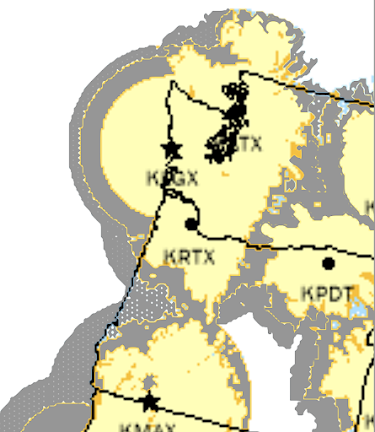What is in Oregon's Radar Gap?
As I have noted on several occasions, Oregon has some of the worst weather radar coverage in the nation, with a huge radar gap off its central and southern coast and another in eastern Oregon
Important weather features approaching the coast can be missed, reducing the skill of short-term forecasts from western Oregon into western Washington. Perhaps including the missed Portland snowstorm of February 22.
Below is a National Weather Service radar coverage map, with yellow indicating the regions of low-level coverage (coverage below 3000 ft above ground level). The coverage would be much worse near sea level. Western Washington and the Washington coast have good coverage thanks to the Langley Hill radar (Hoquiam), the Camano Island radar north of Seattle, and the Portland radar.
But most of the Oregon Coast has no coverage. The Portland radar is blocked by the coastal mountains at low levels and the Medford radar is poorly placed, positioned so high (7500 ft) that the radar beam reaches the coast at 13000 ft and is even higher offshore.
Eastern Oregon is a radar disaster, with no coverage for vast areas.
So what are we missing with such poor radar coverage? What would we see if a radar was there?
I think I can tell you, using our regional high-resolution forecasting system.
Believe it or not, we can simulate what a radar image would be like using the 3-D precipitation produced by forecast models.
Consider yesterday evening at 6 PM. A short-term (2-h) forecast predicted heavy precipitation along and offshore of the central and southern Oregon coast. Western Oregon is experiencing showers, and some precipitation has crossed the Cascades into eastern Oregon.








Comments
Post a Comment